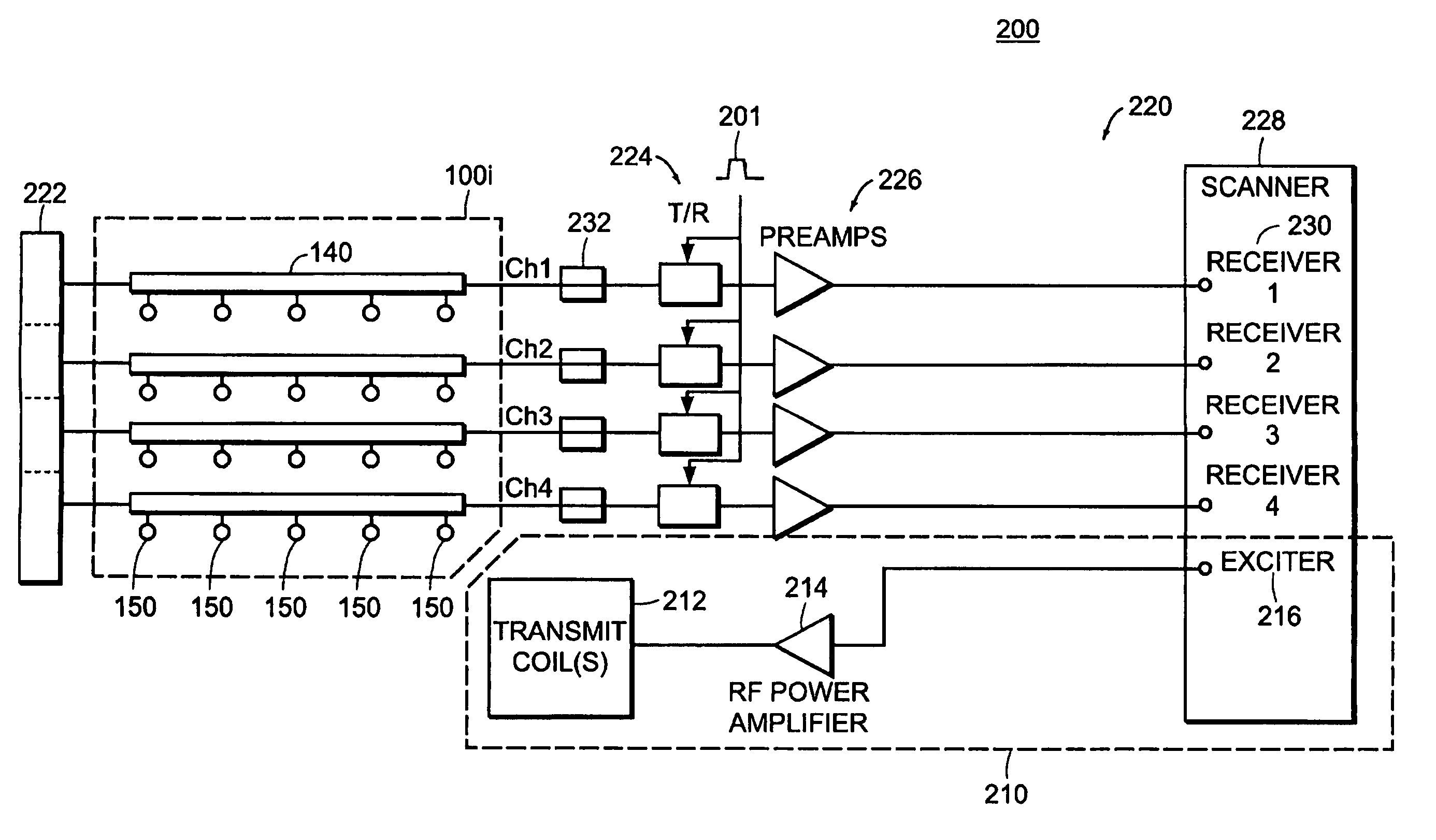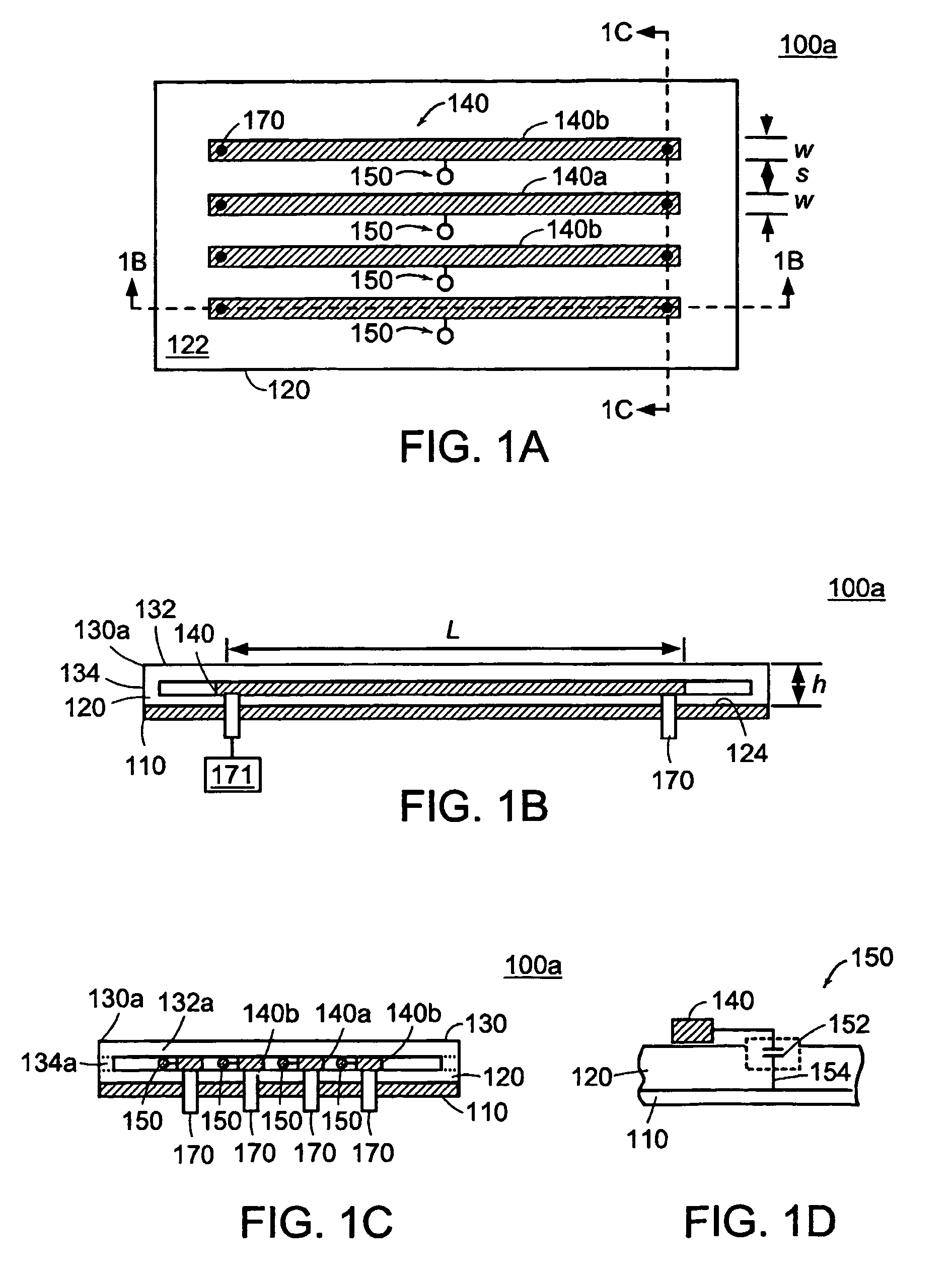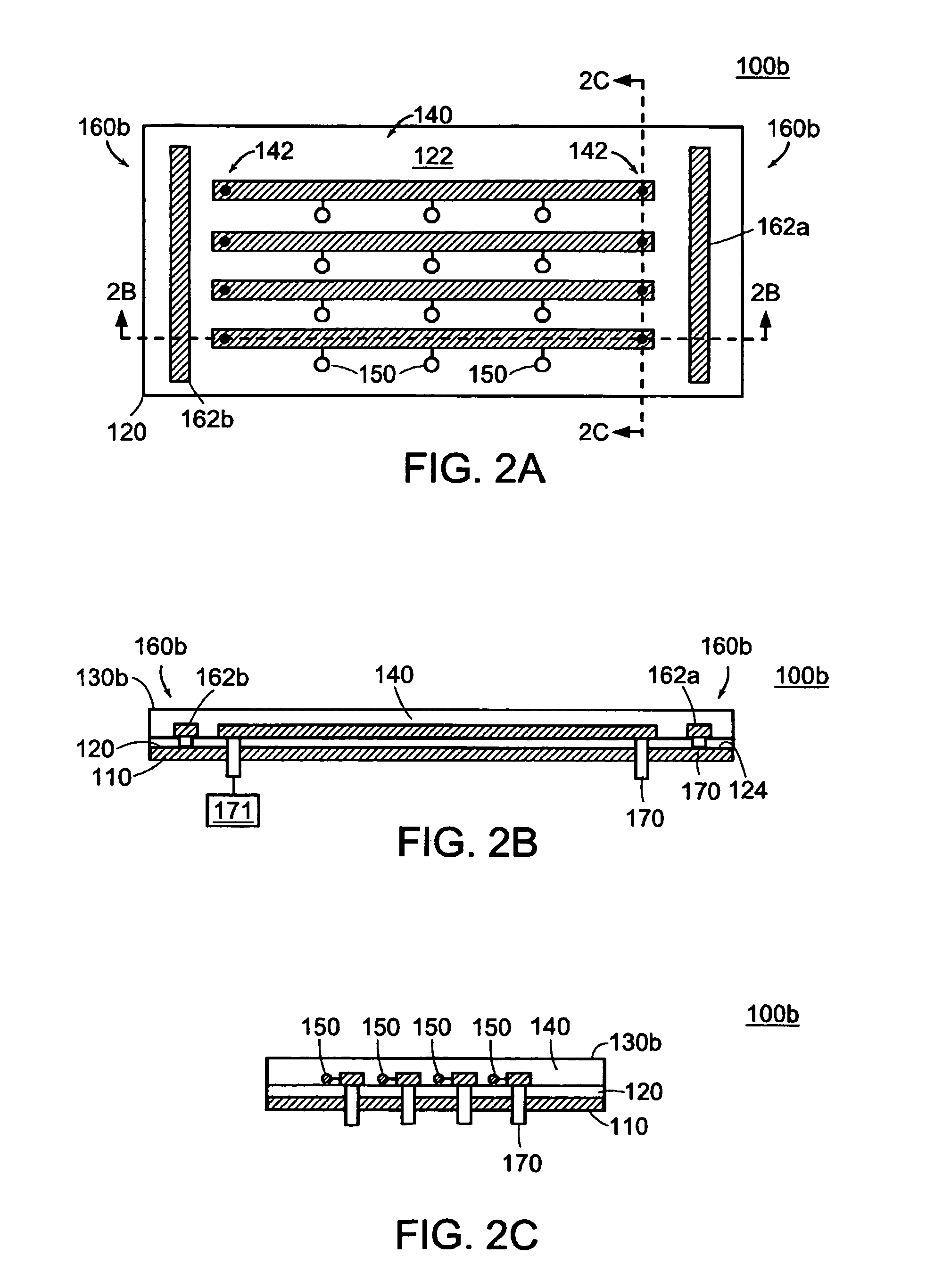MRI tunable antenna and system
a tunable antenna and antenna technology, applied in the field of mri tunable antennas and systems, can solve the problems of less effective circuitry, less manageable signal coupling effects, and increased signal coupling effects, so as to minimize external em coupling or interactions, the effect of minimizing em from the environmen
- Summary
- Abstract
- Description
- Claims
- Application Information
AI Technical Summary
Benefits of technology
Problems solved by technology
Method used
Image
Examples
Embodiment Construction
[0077]Referring now to the various figures of the drawing wherein like reference characters refer to like parts, there are shown in FIGS. 1–8 various views of near-field RF strip array antennas 100a–h according to the present invention. Such strip array antennas can be configured and arranged so as to form a strip array antenna that is planar, arcuate / curved or cylindrical in form. These illustrative forms of a strip array antennas 100a–h shall not be limiting, as the strip array antenna of the present invention can be configured or arrayed so as to form a strip array antenna having any geometric shapes or configuration. In the following, reference numerals 100, 130, 140 and 150 are used when generally referring respectively to a strip array antenna according to the present invention, to the overlay thereof, to any or all of the conductor strips thereof and to the reactive / tuning elements thereof. When reference is being made to a specific antenna embodiment, to a specific conductor...
PUM
 Login to View More
Login to View More Abstract
Description
Claims
Application Information
 Login to View More
Login to View More - R&D
- Intellectual Property
- Life Sciences
- Materials
- Tech Scout
- Unparalleled Data Quality
- Higher Quality Content
- 60% Fewer Hallucinations
Browse by: Latest US Patents, China's latest patents, Technical Efficacy Thesaurus, Application Domain, Technology Topic, Popular Technical Reports.
© 2025 PatSnap. All rights reserved.Legal|Privacy policy|Modern Slavery Act Transparency Statement|Sitemap|About US| Contact US: help@patsnap.com



